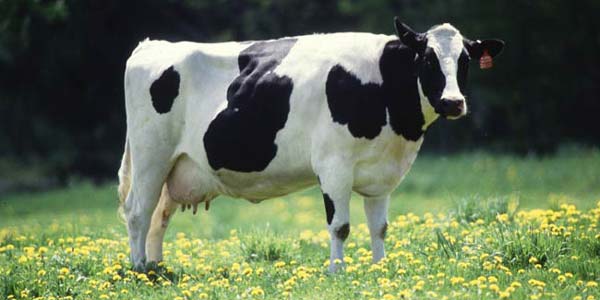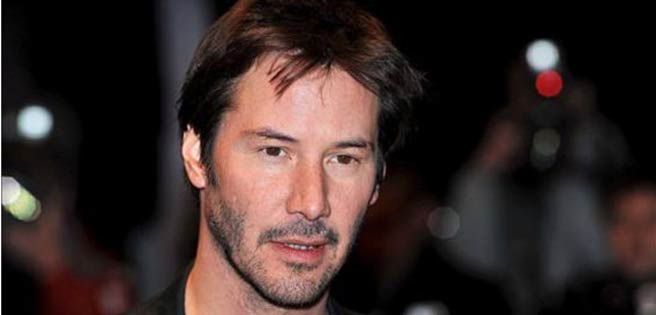The weirdness continues. Today, we go back to the turn of the millennium to check out a script that was once considered to be one of the craziest in Hollywood.
Welcome to Weird Scripts Week! This week I’ll be reviewing odd scripts, odd ideas, and writing that’s just plain odd. It will all culminate Friday when I review the strangest premise I’ve ever reviewed on Scriptshadow. To check out yesterday’s shark-tastic entry, click here. Otherwise, slather yourself in Jake Gylennhaal selfies and prepare to milk some sluglines.
Genre: Weird
Premise: After a dying scientist creates a talking cow, a team of people decide to market her into the biggest thing since prime rib. That plan goes about as bad as you’d expect it to.
About: For those too young to know who Richard Kelly is, at one point in the early 2000s, he was the equivalent of, say, Nicholas Wending Refn, a writer-director with an edge to his work, a filmmaker whose every move inspired geeks to imagine what he’d come up with next. That buzz died down after the Donnie Darko director released Southland Tales, a sprawling tale that seemed to pack every genre known to man into a single movie. What’s become lost in the Richard Kelly lore is the fact that he did a lot of writing both before and after Darko, so he has quite a few scripts out there. Bessie was written a year before Donnie Darko came out.
Writer: Richard Kelly
Details: 116 pages (Valentine’s Day draft, 2000)
Oh yeah.
You knew we had to push the envelope with Weird Week. James Bond fighting robot sharks was pretty out there, but if we wanted to truly enter Kookoo Land, we needed a script and a writer so batshit bananas, I’d get calls from the local mental asylum asking me for the writer’s contact information. That moment has come, my friends. It’s time for Bessie, the walking-talking cow.
35 year-old manager Ron McKittrick is sick of managing the career of his Justin Bieber like star, Sebastian Knight, particularly after Sebastian is accused of raping a fan. A day after quitting, he gets a surprise call from an old friend who demands that he come up to Iowa. She’s got a surprise for him.
McKittrick begrudgingly heads to the land of baseball fields that talk to you, but anger turns to delight when he learns of the reason he was brought in. His friend introduces him to Bessie, a walking talking cow with the mental capacity of a 3rd grader and a special affinity for Ashley and Mary Kate Olson. McKittrick’s friend wants him to manage a team that will introduce Bessie to the world, and make billions of dollars in the process.
This team consists of Dominique, a culturally-agnostic music video director more pretentious than an all-night poetry slam, Katherine, a lawyer with a temper quicker than Uwe Boll after a failed fund-raising campaign, and Kimberly, an ugly fat teenager who McKittrick makes his personal assitant after she tells him that if he doesn’t, she’ll start hooking for cash.
“Team Bessie” hops in a tour bus and starts travelling across the United Sates. Unfortunately, there are a few bumps along the road. When Team Bessie gets in a diner brawl with a bunch of rednecks, the cops are called in and it looks like their moo-happy secret is going to be milked onto the 24 hour news cycle. That is until Bessie screams a high-pitch yowl that somehow makes all the locals pass out while keeping Team Bessie awake and fine.
As Team Bessie gets back on the bus, they start to wonder if Bessie isn’t keeping a few secrets from them. It doesn’t take long to figure out she is. It turns out Bessie can levitate things, telepathically talk to people, and oh yeah, might be Jesus Christ!
When the group finally gets to Hollywood, Bessie’s had enough. She drops the 3rd grade act and reveals that she’s actually the smartest person-cow in the world. She demands to speak with Mary-Kate and Ashley immediately or else she’s going to blow up Los Angeles or something. It’ll be up to McKittrick to come up with a way to stop Bessie, but as we all know, once it’s out, you can’t put the cow back in the barn.
I’m trying to think of a way to discuss this script productively. I’m not sure it’s possible though.
I suppose that with “Ted” having come and gone, a movie about a talking animal shouldn’t phase us. But this is nothing like Ted. Bessie is closer to the meals they used to serve me at college. You’d go down the cafeteria line, they’d put a bunch of stuff on your tray, and afterwards, you’d try to figure out what each dish was. Those were some tough times, I tell ya. I mean, the milk at our school was blue. BLUE MILK. How’s that for a cow reference?
If I had to guess, I’d say this is a satire. But of what, I’m not clear. People maybe? The universe? I guess it could be a satire about Hollywood and our obsession with anything that’s marketed to us, but it’s just so damn weird, I’m tempted to take it at face value. Maybe this is just about a cow, who has the power of telepathy, and is the reincarnation of Jesus Christ.
Taking a step back, I did notice a few teachable moments. Whenever you write a script, one of your biggest goals is to give the reader something to look forward to. A destination. A culmination. If you’re not creating that desire within the reader, it becomes harder and harder to keep them engaged.
Remember when you were a kid in those endless family car trips? What did you keep asking? “Are we there yet?” “Are we there yet?” If you don’t keep reminding the reader where we’re going, you’re risking that same kind of agitation. It’s your job to keep reminding the reader: “Hey, this is where we’re going, this is how we’ll get there, and this is how long it’ll take.”
I’m not saying you have to provide exact times. But it should be clear how much closer we’re getting to our destination. So many writers keep their readers out of the loop and if we’re out of the loop, we can’t complete the task.
The opposite of this is something I call “drifting.” This is when you’re allowing the story to unfold, but not giving the audience any indication of where it’s going. Going back to the car trip analogy, it’s like asking your dad, “Are we there yet?” and hearing the response, “Anybody need to go to the bathroom? There’s a rest stop ahead.”
If you “drift” for too long, the audience/reader starts to lose focus. And loss of focus is the death-knell for any read. If that drift goes on for as little as five pages, the reader is done with your story.
So here, Team Bessie jumps into this tour bus but Kelly doesn’t immediately make it clear why. There’s a vague notion that we’re going somewhere with Bessie, and the marketing angle of Bessie is mentioned, but we’re still not clear why getting into this van helps achieve this goal. Are we going on some sort of 19th Century presidential campaign, where we go from town to town, introducing Bessie? I don’t know. Nobody explains it to me.
I get on writers about this all the time but it’s REALLY important. Too many writers are obscure when it comes to WHAT their characters are doing and WHY. That’s fine if you’re creating a deliberate mystery (“What’s the smoke monster?”). But if we’re talking about nuts-and-bolts story beats, you got keep us in the loop!
By the time we figure out we’re going to Hollywood to announce Bessie to the world, it’s way too late in the story. By that point I’d drifted off into several daydreams. One of which involved a talking moose named “Gerald” who had the ability to teleport.
Compare the differences between Raiders of the Lost Ark and Kingdom of the Crystal Skull. Look at how BIG of a deal was made of the Ark in Raiders (heck, it’s right there in the title!). So we’ve got something to look forward to right from the get-go. The importance of the Ark is reinforced a dozen or more times throughout the script, making us only more obsessed with reaching the destination. Imagine if the Ark had only been mentioned in a single scene leading up to the climax. Do you think our anticipation for what was in the Ark would’ve been nearly as obsessive? Of course not.
With Crystal Skull, we’re not really sure what we’re after. At first it’s a crystal skull, but that seems to be a small piece in a much bigger murkier puzzle that only gets less clear the further into the movie we go. You could see a bit of this in Tomorrowland as well. We knew we were trying to get to Tomorrowland, but we didn’t really know why, and after not knowing for so long, we just got bored and checked out. This could’ve easily been solved had the writer tried harder to keep us in the loop.
Having said all that, Bessie probably isn’t a movie that should be broken down via conventional methods. In classic “Weird Week” fashion, it creates its own rules, and you either buy into them or you don’t. Heck, you’re talking to a guy who thought Birdman was a pretentious taxidermy experiment gone awry. And there are a lot of parallels between Bessie and Birdman. To really get a feel for this script, you should check it out yourself, which is why I’m including a link. Read it and let us know how you feel!
Screenplay link: Bessie
[ ] what the hell did I just read?
[x] wasn’t for me
[ ] worth the read
[ ] impressive
[ ] genius
What I learned: Every screenwriter should write this kind of script once in their career – a script where you throw logic and form and rules out the window and let your instincts and imagination guide you. I’ll be honest with you. 99% of the time the end result will be disastrous. But doing so will teach you to TAKE CHANCES, to BE A LITTLE CRAZY, and to GO WITH YOUR GUT. And you’ll need those muscles every once in awhile if you’re going to be a great writer.



